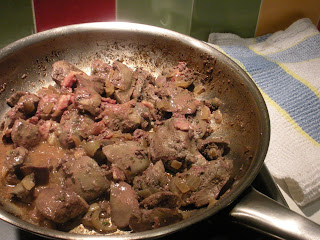I was first attracted to this book by its vibrant cover and the title "one hundred foot". For those of you who only know metric measurement, a one hundred foot journey won't take you very far. It is about as basic as say, crossing the road.
This made me ask what the main character was running from or to? Was it a spiritual, emotional or physical journey? Was it one that went back in time or forward in to the future? And as it turns out, the story is all of these.
In the opening paragraph we are introduced to Hassan Haji, one of six children born in to a Muslim family who lived above their grandfather's restaurant in Mumbai, India.
" I suspect my destiny (as a chef) was written from the start, for my first sensation of life was the smell of machli ka salan, a spicy fish curry." p3
Morais has written a realistic story about a family who leaves Mumbai, immigrates to London and settles in Lumiere in France. But this is NOT that journey hinted at in the title. The seeds of the one hundred-foot journey were sown two generations ago before THE notable one hundred-foot journey which is more prosaic than the epic that encapsulates it.
"And so next day...I crossed the street. A lot of emotion went in to that one hundred-foot journey...It was a small journey in feet, but I felt I was striding from one universe to another." p179
On this day, Hassan left his father's Indian restaurant and crossed the road to the rival French restaurant - Le Saule Pleureur - where he began formal training with his mentor and twice-awarded Michelin Star chef, Madame Mallory.
This well-constructed story makes many references to exotic Indian dishes and fine French dining. In this book, food flies the cultural flag for two countries with long culinary histories.
For the Haji family, food represents a way out of the slums towards independence and the importance of gathering around the family table. For Madame Mallory, food is an art form representing technical expertise and the expression of what it is to be French.
For the Haji family, food represents a way out of the slums towards independence and the importance of gathering around the family table. For Madame Mallory, food is an art form representing technical expertise and the expression of what it is to be French.
A sobering thought in this book is the sacrifice that has to be made for the perfect meal. From the description of an halal butchery in Mumbai, to a wild boar hunt in France. And from the ceremonial slaughter of a pig on Madame Mallory's property to the forced feeding of ducks for their livers.
While Hassan evolves, assimilates and conquers French cuisine to the adulation of his peer group in Paris, the real hero in my mind is his father Abbas Haji. Abbas overcomes personal grief and shepherds his family to a better life. He may be loud, uneducated and come across to some readers as an offensive "foreigner" but his instincts are good. He is the bow that shoots his son towards his future as a 3-star Michelin chef.
Chicken Tikka
"There was an urn of Goa fish stew, thick and gooey. Chicken Tikka marinated in pink spices and lemon...' p121
Chicken Tikka is a Hindi dish marinated in yogurt, spices and tomatoes, that can be baked, grilled or barbequed. Tikka means "pieces". The Haji family is Muslim and maybe influenced by Arab Afghanistan as they have a similar dish using yogurt and spices.
1kg chicken breast cut into bite sized pieces and marinated
Marinade
1 cup Greek yogurt
1 tablespoon lemon juice
3cm ginger grated
2 teaspoons ground cummin
1 teaspoon garam masala
1 teaspoon cinnamon
2 teaspoons cayenne pepper
2 teaspoons black pepper
If you intend to grill or BBQ thread chicken pieces on to skewers that have been pre soaked in water to prevent them burning.Prepare the sauce separately. If you intend to bake add the sauce to the marinated chicken pieces. Bake at 160 degrees for about 45 minutes or until cooked.
Sauce
50gm butter
3 teaspoons crushed garlic
Chilli to taste
2 teaspoons cumin
2 teaspoons paprika
2 cups of crushed tomatoes
300 ml of thickened cream
Coriander to garnish
Serve with rice or naan
Foi Gras
"Madam Degeneret was a feisty old woman who kept her farm ticking over with the money she earned from force feeding 100 Moulard ducks...a farm hand was busy plucking and bleeding the ducks before removing the prized foi gras." p165
Foi gras is a French delicacy. However, the practice of force feeding ducks is outlawed in many countries. Due to this inhumane and outdated practice I have chosen to do Chicken Liver Pate instead.
Chicken Liver Pate
750 gm chicken livers washed, trimmed of fat, sinew and bile sacs and pat dry.
1 large eschalot
100 gram butter
1/4 cup brandy
Seasoning
50 gram unsalted butter
Extras
If you wish, a rasher of bacon(chopped)can be fried with the onion and Grand Marnier can be used instead of brandy. The addition of herbs such as thyme adds another dimension to this flavoursome dish.
Method
Fry the onion in a small amount of butter until softened. Remove from pan. Heat remaining butter and lightly fry chicken livers until pink. Return onions to pan and add brandy. Simmer one minute. Season. Place in food processor and blend. Push liver through sieve to get rid of any remaining bits of sinew. Put into ramekins. Heat 50gm of unsalted butter and once melted pour over the top of the pate. Garnish with herbs and refrigerate for up to 5 days. Serve with mini toast.
©2011 My Novel Idea by Ann Etcell-Ly/All Rights Reserved




No comments:
Post a Comment